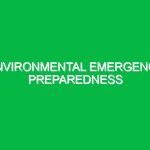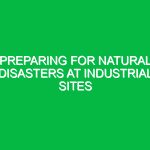Introduction
Responding to chemical spills is a critical aspect of health, safety, and environmental (HSE) management. When hazardous substances leak or spill, the consequences can be dire, affecting not just the immediate area but also the broader ecosystem and public health. Proper response protocols are essential to mitigate risks, protect lives, and preserve the environment. This article delves into the multifaceted challenges of responding to chemical spills, outlining potential hazards, safety precautions, best practices, and relevant regulations.
Understanding Chemical Spills
A chemical spill occurs when a hazardous substance is accidentally released into the environment, often in a manner that poses serious risks to health and safety. These spills can happen in various settings, from industrial facilities to transportation accidents. Because of the diverse nature of chemicals, the response strategies must be tailored to the specific type of substance involved.
Potential Hazards and Risks
The risks associated with chemical spills are numerous and can vary significantly depending on the nature of the chemical involved. Some of the primary hazards include:
1. Toxic Exposure
Many chemicals are toxic when inhaled, ingested, or absorbed through the skin. For instance, a spill of chlorine gas can lead to respiratory distress and even fatalities. The immediate vicinity of a spill often becomes hazardous, necessitating swift evacuation and medical intervention.
2. Environmental Impact
Chemicals can contaminate soil, water, and air, leading to long-term ecological damage. For example, oil spills in oceans can devastate marine life and disrupt local economies dependent on fishing and tourism.
3. Fire and Explosion
Flammable substances pose an additional risk of fire or explosion. A gasoline spill near an ignition source could result in catastrophic outcomes, as seen in various industrial accidents throughout history.
4. Physical Hazards
Spills can create slippery surfaces, leading to slips and falls. Additionally, the presence of heavy containers or equipment can increase the risk of physical injuries during the response process.
Safety Precautions for Responding to Chemical Spills
When faced with a chemical spill, a structured approach to safety is paramount. Here are some best practices to ensure a safe and effective response:
1. Immediate Assessment
Upon discovering a spill, assess the situation without putting yourself in harm’s way. Identify the type of chemical involved, the volume spilled, and the potential impact on people and the environment. This initial evaluation is crucial for determining the appropriate response actions.
2. Evacuation Procedures
If the spill poses an imminent threat to health, initiate evacuation protocols for anyone within the vicinity. Establish a safe perimeter and ensure that emergency services are notified promptly. During a spill of hazardous substances, time is often of the essence.
3. Personal Protective Equipment (PPE)
Responders should wear appropriate PPE, which may include gloves, goggles, respirators, and protective clothing depending on the chemical characteristics. For example, acid spills require acid-resistant gear, while biological spills may necessitate biohazard suits. Ensure that all responders are trained in the proper use of PPE.
4. Containment and Cleanup
Contain the spill using barriers or absorbent materials to prevent further spread. Use spill kits that are readily available in industrial settings, containing absorbents, neutralizers, and disposal bags. Follow the Material Safety Data Sheet (MSDS) for specific cleanup instructions tailored to the chemical involved.
5. Reporting and Documentation
Document the spill incident thoroughly, including the nature of the chemical, the circumstances surrounding the spill, and the actions taken in response. This documentation is crucial for regulatory compliance and for improving future response protocols.
Best Practices in Chemical Spill Response
Implementing best practices in spill response not only enhances safety but also minimizes environmental damage. Here are several strategies to consider:
1. Training and Drills
Regular training sessions and drills are vital for ensuring that all personnel are prepared for a spill incident. Familiarity with response protocols can significantly reduce reaction time and improve overall effectiveness. A personal anecdote comes to mind from a training session I attended at a chemical manufacturing plant. The team practiced a simulated spill response, which allowed them to identify weaknesses in their protocols. When a real incident occurred months later, they executed their response flawlessly, demonstrating the value of preparation.
2. Communication Systems
Establish clear communication channels for reporting spills. Ensure that all employees know whom to contact in case of an emergency. Having a well-defined chain of command can streamline the response process and prevent confusion.
3. Regular Inspections
Conduct regular inspections of storage areas and transport vehicles to identify potential leak sources before a spill occurs. Proactive maintenance can prevent many spills from ever happening. For example, a manufacturing facility I worked with implemented a stringent inspection routine that significantly reduced accidents related to chemical storage.
4. Environmental Monitoring
After a spill, environmental monitoring is essential to assess the impact and effectiveness of cleanup efforts. This may include soil testing, water quality assessments, and air quality monitoring. Depending on the severity of the spill, long-term environmental studies may be required to understand the full extent of the damage.
Regulations and Standards Governing Chemical Spill Response
Various regulations govern chemical spill responses to ensure safety and environmental protection. Understanding these regulations is crucial for compliance and effective management. Some of the main regulations include:
1. OSHA Standards
The Occupational Safety and Health Administration (OSHA) sets forth standards related to hazardous waste operations and emergency response (HAZWOPER). These standards mandate training and preparedness for employees who may be involved in responding to hazardous materials spills.
2. EPA Regulations
The Environmental Protection Agency (EPA) enforces regulations concerning the discharge of pollutants into the environment. The Clean Water Act and the Resource Conservation and Recovery Act (RCRA) detail the responsibilities of organizations regarding hazardous waste management and spill reporting.
3. State and Local Regulations
In addition to federal regulations, state and local laws may impose additional requirements for chemical spill response. Organizations must be aware of and comply with these local regulations to avoid penalties and ensure community safety.
Conclusion
Responding to chemical spills is a complex but essential aspect of health, safety, and environmental management. By understanding the potential hazards, implementing best practices, and adhering to regulatory requirements, organizations can effectively minimize risks associated with chemical spills. Preparedness is key; through training, communication, and regular inspections, a company can ensure that its employees are equipped to handle spills safely and efficiently. Ultimately, a proactive approach to spill response not only protects workers and the environment but also fosters a culture of safety that benefits everyone involved.


